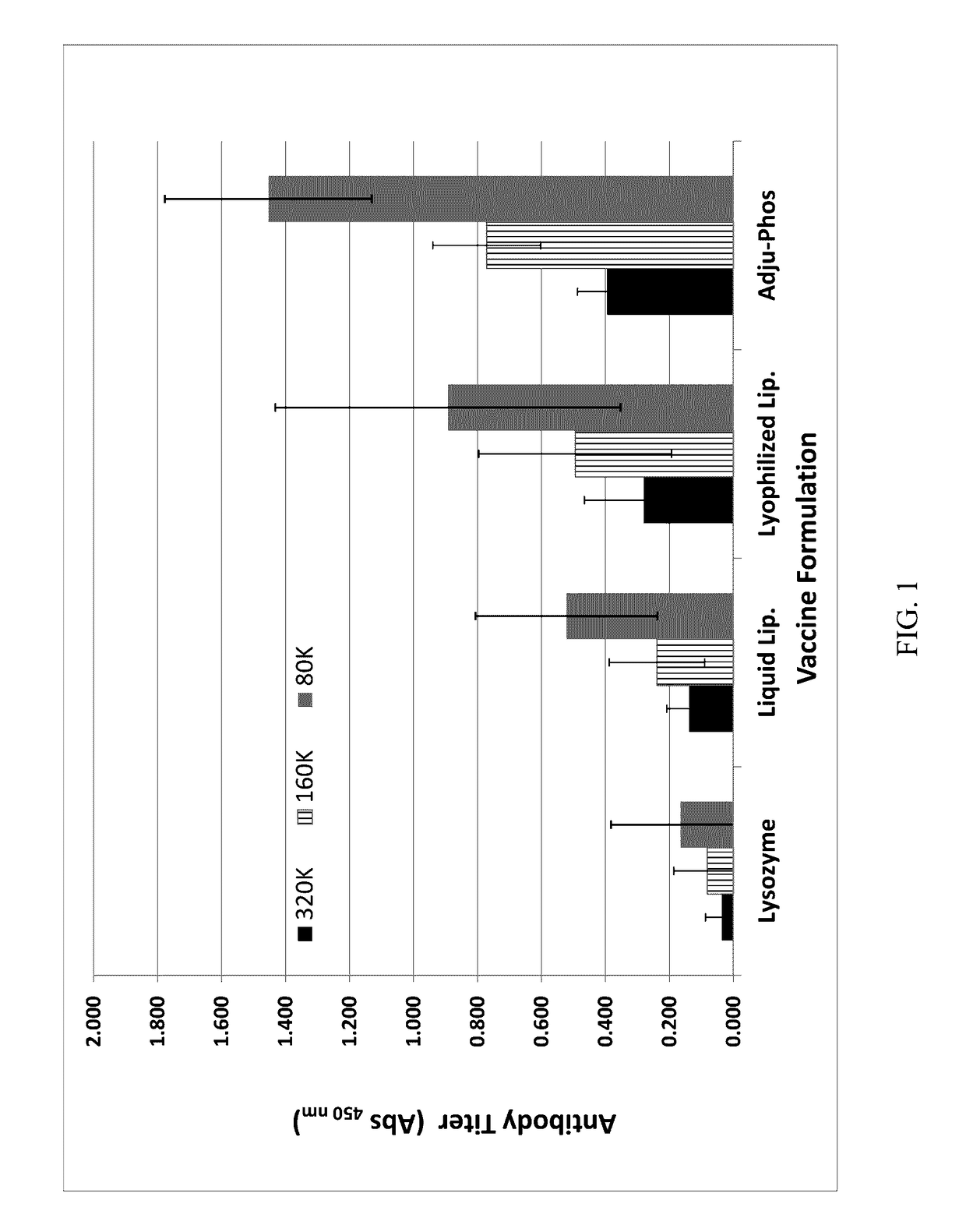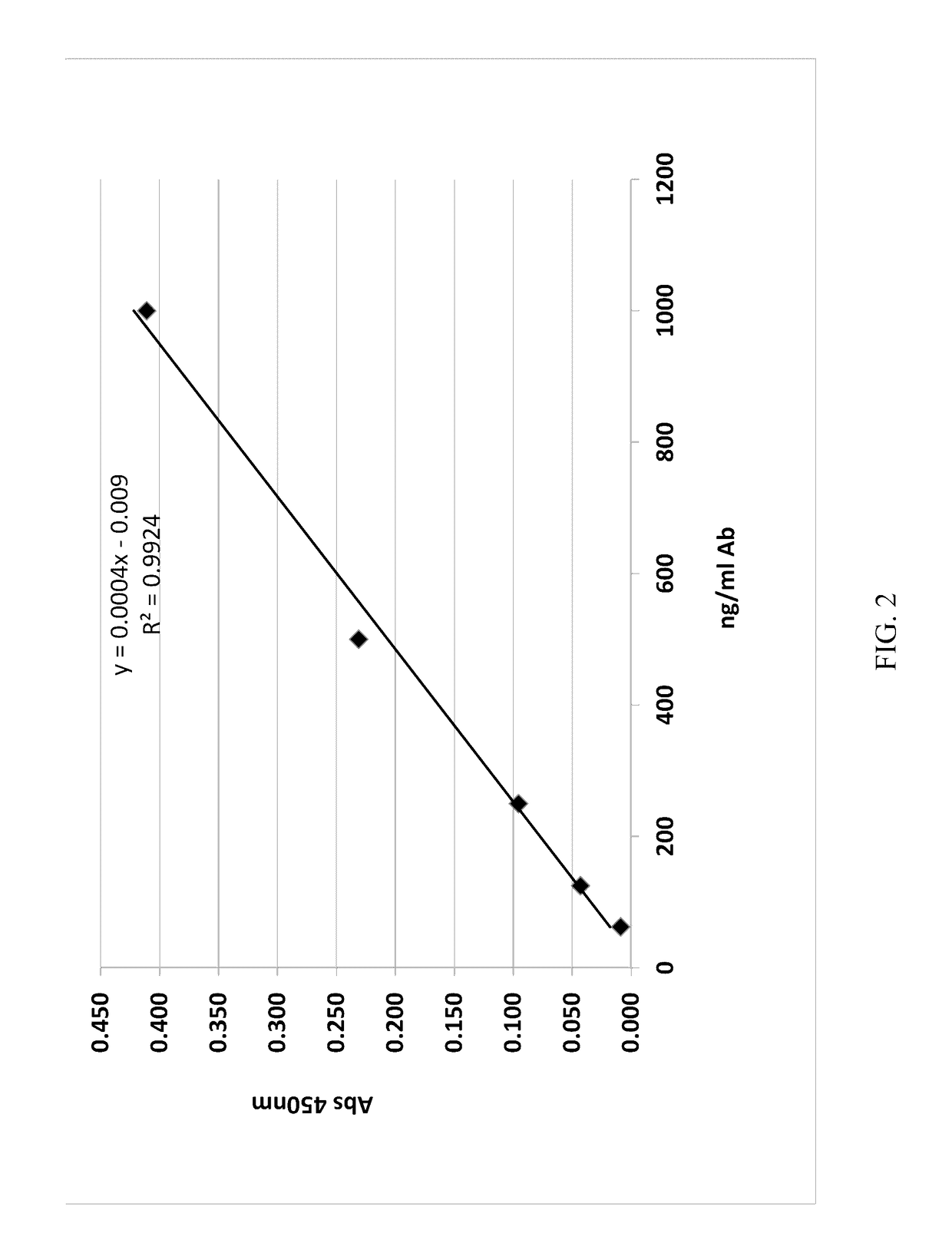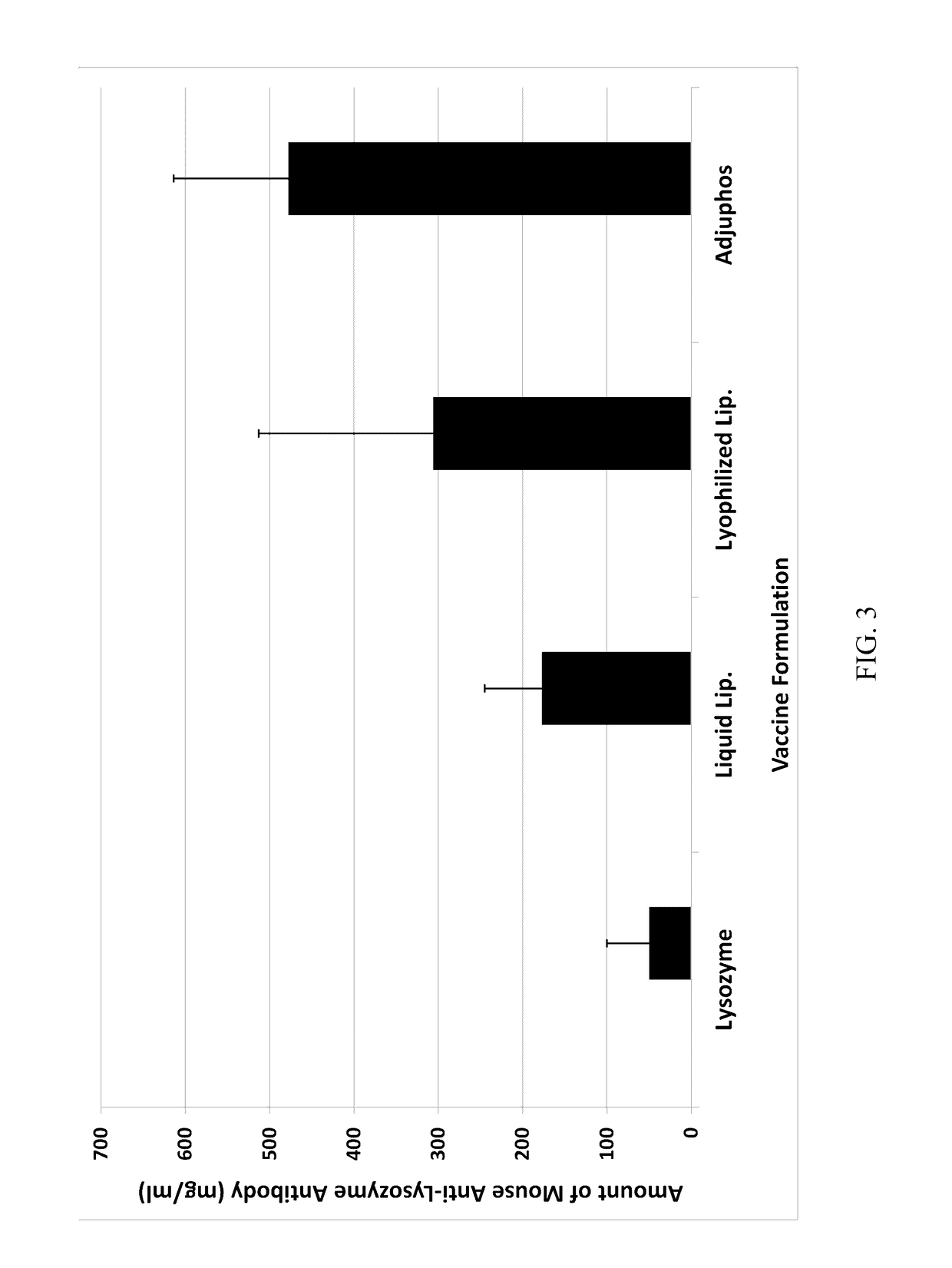Liposomal vaccine adjuvants and methods of making and using same
a technology of liposomal vaccine and adjuvant, which is applied in the field of liposomal vaccine adjuvant composition and the field of making or using same, can solve the problems of poor immunogenicity, low relative efficacy of immune system activation, and numerous other problems of inorganic adjuvants
- Summary
- Abstract
- Description
- Claims
- Application Information
AI Technical Summary
Benefits of technology
Problems solved by technology
Method used
Image
Examples
examples
I. Vaccine Preparation Using Lysozyme as the Antigen
Vaccine Preparation
[0066]The immunogenicity of a lysozyme-liposomal vaccine (Lipo-Lyz) was investigated before and after freeze-drying (Formulations 1 and 2, respectively). Lysozyme adsorbed to Adju-Phos® (Adju-Lyz) was used as an aluminum salt based vaccine reference. Also a solution of lysozyme without adjuvant was used as a reference. The four different formulations are summarized in Table 2. All formulations were prepared in a laminar flow hood using depyrogenated vials and utensils, as it is described below.
[0067]
TABLE 2Formulation descriptionsFormula-Lyopro-DosagetionAdjuvantAntigentectantform1DPPC / DPPG / ChickenSucroseLiquidDOPC / CholesterolEgg(Lipo-Lyz (Aq))Lysozyme2DPPC / DPPG / ChickenSucroseLyophilizedDOPC / CholesterolEgg(Lipo-Lyz (FD))Lysozyme3AluminumChickenSucroseLiquidphosphateEgg(Adju-Phos ®)Lysozyme(Adju-Lyz (Aq))4NoneChickenSucroseLiquid(Lyz)EggLysozyme
Preparation of a 9 Mg / ml Stock Lysozyme Solution in PBS
[0068]In order ...
PUM
| Property | Measurement | Unit |
|---|---|---|
| mean hydrodynamic particle diameter | aaaaa | aaaaa |
| temperature | aaaaa | aaaaa |
| temperature | aaaaa | aaaaa |
Abstract
Description
Claims
Application Information
 Login to View More
Login to View More - R&D
- Intellectual Property
- Life Sciences
- Materials
- Tech Scout
- Unparalleled Data Quality
- Higher Quality Content
- 60% Fewer Hallucinations
Browse by: Latest US Patents, China's latest patents, Technical Efficacy Thesaurus, Application Domain, Technology Topic, Popular Technical Reports.
© 2025 PatSnap. All rights reserved.Legal|Privacy policy|Modern Slavery Act Transparency Statement|Sitemap|About US| Contact US: help@patsnap.com



